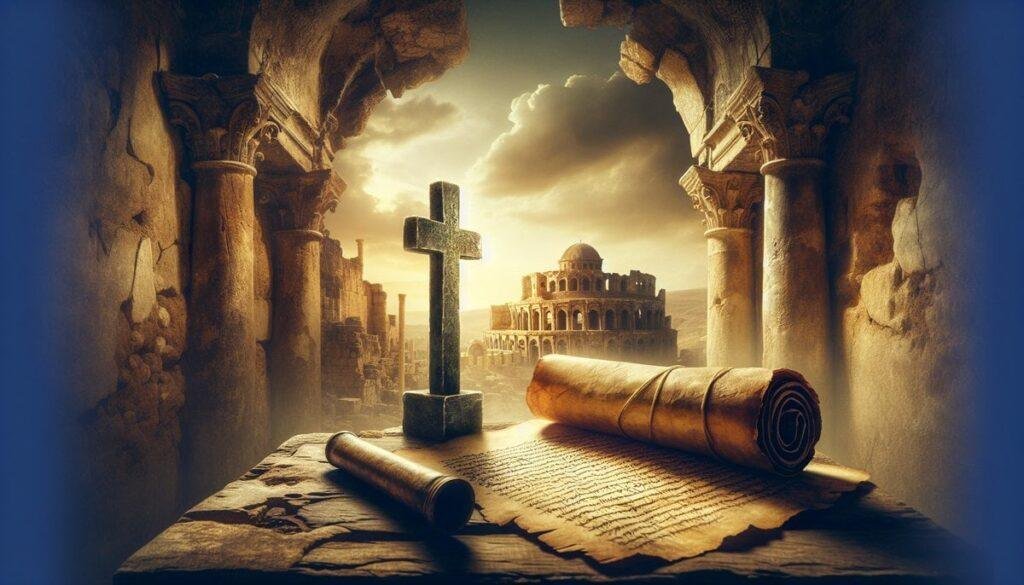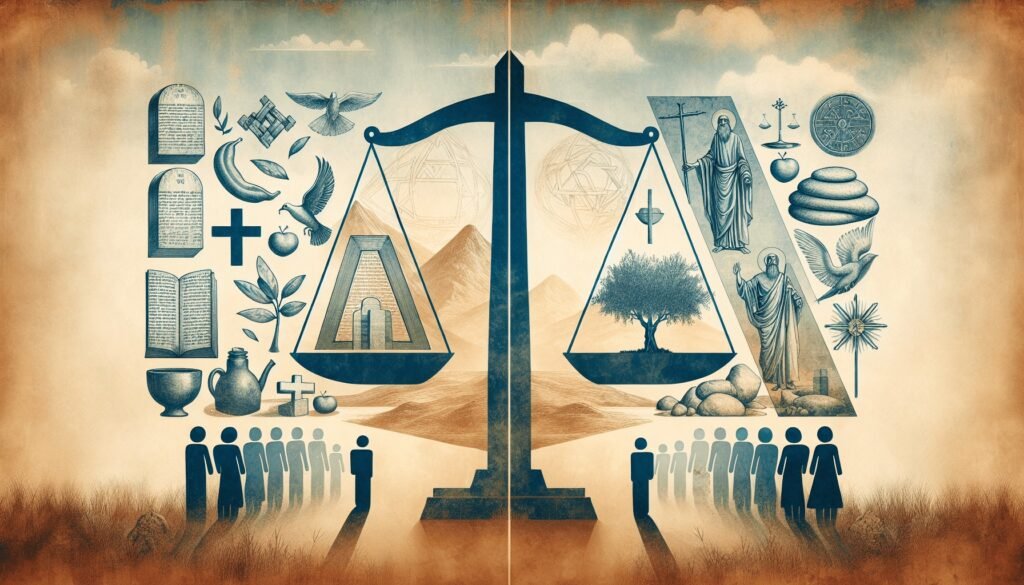What if I told you that two seemingly unrelated topics—Qumran Wadi silt and the Book of Job—reflect significant aspects of human resilience and spirituality? Let’s sift through the sediment of history and belief to uncover what these two subjects reveal about our understanding of righteousness during trials.

A Snapshot of Qumran: Where History Meets Mystery
You might not have heard much about Qumran, but this arid landscape near the Dead Sea is bursting with historical significance. It was here that the Dead Sea Scrolls were discovered, along with artifacts that provide profound insight into Jewish life during the Second Temple period. Think of Qumran as a treasure chest, waiting for curious minds to investigate the important stories within.
The Geological Canvas: Understanding the Silt
You could consider the silt found in the Qumran Wadi as more than just dirt; it acts as a historical record. The region is characterized by its unique geological features, including its silty beds formed over millennia. This silt is fascinating because it’s a mix of minerals that has witnessed climatic changes, human activity, and ultimately, the evolution of a significant community.
- Composition: Qumran’s silt is primarily composed of clay minerals, which hold water well, a useful characteristic in this arid region.
- Erosion Factors: The erosive forces across the landscape have resulted in rich alluvial deposits, contributing to both agricultural potential and archaeological discovery.
- Archaeological Significance: The layers of silt can help archaeologists date various strata of human occupation, shedding light on the lifestyle and practices of those who lived there.
Life in Qumran: The Essenes and Their Spiritual Practices
Digging deeper, you will find that Qumran was predominantly inhabited by a sect known as the Essenes. They lived a monastic lifestyle that drew them away from the complexities of contemporary society. Their ideals were about purity, righteousness, and separating themselves from what they perceived as a corrupt world.
- Community Dynamics: Essenes practiced communal living, sharing resources, meals, and possessions.
- Ritual Purification: Their rigorous adherence to purity laws often included extensive ritual washing, reflecting their commitment to spiritual cleanliness.
- Scriptural Acts: They were renowned for their manuscript creations, which led to the preservation of many texts, including the Hebrew Bible.
The Book of Job: A Testament of Faith Amidst Suffering
You might find the Book of Job a compelling narrative, one that delves into the depths of human suffering and righteousness. It presents the story of a man tested beyond measure yet holding steadfast to his faith. It’s a timeless exploration of questions that still resonate.
Unpacking Job’s Story
The narrative of Job is set in mythic times, a story blending poetic dialogues and prose. You see Job, a wealthy man, losing his possessions, health, and family yet wrestling with the question of why suffering befalls the righteous.
- Job’s Faith: Throughout his trials, Job’s faith is both tested and reaffirmed. This mirrors the expectations of righteousness—the belief that a good life should not lead to hardship.
- Dialogue with Friends: Job’s conversations with his friends reveal the tension between conventional wisdom and his understanding of God’s justice.
- Divine Response: The climax of the book offers a remarkable divine response, emphasizing the limitations of human understanding in the face of divine wisdom.

The Intersection of Qumran and Job: A Moral Compass
How do these two narratives—one geographical and the other theological—intertwine? They both touch upon critical themes of righteousness and endurance, flourishing amidst adversity.
Righteousness in Adverse Contexts
Both the Essenes and Job exemplify the struggle to maintain righteousness despite life’s uncertainties. At Qumran, the community was grounded in their beliefs, similar to how Job remained steadfast. The comparison paints a broad picture of what it truly means to be righteous.
- Community vs. Individual: Job’s suffering is intensely personal, while the Essenes sought communal faith. This opens the discussion about how collective versus individual resilience shapes one’s character.
- Suffering and Meaning: In both narratives, suffering leads to deeper insights about faith, morality, and human existence.
Cultural and Theological Significance
You can’t overlook the broader impact of these narratives. They challenge cultural and theological norms, inviting readers to reflect on moral dilemmas that are just as relevant today.
- Philosophical Implications: The tensions present within the Book of Job resonate with philosophical inquiries about justice and divine oversight, which have continued to inspire thought through centuries.
- Contemporary Reflections: In today’s complex world, you might find parallels in societal issues and personal trials that challenge the notion of fairness and righteousness.
Archaeological Insights: Sifting Through History
As you move forward in this exploration, it’s essential to recognize the extensive archaeological work at Qumran, which has unearthed artifacts illuminating the Essenes’ lifestyle and spiritual endeavors.
Significant Finds
- The Dead Sea Scrolls: Arguably the most significant discovery, these ancient texts provide insight into Jewish beliefs, sectarian issues, and biblical manuscripts.
- Qumran’s Ritual Baths: The existence of these baths highlights the community’s emphasis on purity and the practice of regular ritual cleansing.
- Living Quarters: Archaeological digs reveal the structures where the Essenes lived, showcasing their commitment to communal living and spiritual austerity.
The Impact on Biblical Understanding
The findings at Qumran compel us to reconsider many aspects of biblical teachings. The scrolls offer context to texts like Job, enhancing our understanding of religious thought during the time.
- Scriptural Variations: Through the discovery of various manuscript versions, we see how interpretations of Scripture evolved and how they relate to concepts of suffering and justice.
- Rabbinic Thoughts: Qumran offers a window into pre-rabbinic Judaism, prompting deeper inquiry into how righteousness was viewed in the context of suffering.
Qumran and Job: Dual Perspectives on Faith
Remember, interpreting faith is subjective. The dual perspectives offered through Qumran and the Book of Job allow for a fuller understanding of how past communities navigated their beliefs in the face of trials.
- Job as a Model: For the Essenes, Job may serve as a model of resilience and perseverance under divine test.
- Collective Memory: Mutual suffering built communal strength, much like the relationships seen within the Qumran community.
Lessons from the Past: Resonance with Modern Life
How do these ancient stories inform our current experiences? In a world still grappling with suffering, these narratives carry weighty lessons about endurance and faith.
Coexisting with Adversity
Both Qumran’s teachings and Job’s story encourage embracing one’s trials with a reflective mindset.
- Righteousness Under Fire: You might find that the essence of being righteous doesn’t shield you from suffering but rather shapes your response to it.
- Community’s Role: Whether through spiritual communities or support networks, the significance of collective resilience becomes evident in tough times.
Spiritual Growth Through Struggles
You may resonate with the idea that trials are a crucible for spiritual growth. Reflecting on Job’s journey, you can see how difficulties might nurture resilience and foster profound connections with beliefs.
- Personal Connections: Just as Job grappled with his understanding of God amidst suffering, you might find comfort in fostering your own spiritual dialogue through life’s challenges.
- Rethinking Righteousness: Modern interpretations continue to evolve, encouraging individuals to challenge traditional definitions of righteousness in light of personal experiences.
Conclusion: Remembering the Wisdom of the Ancients
While Qumran Wadi silt and the Book of Job may seem like disparate subjects at first glance, they are intricately connected through themes of suffering, righteousness, and communal values. Historical context, geological insight, and theological exploration offer a layered understanding of human resilience in adversity.
Reflecting on their intertwined narratives not only illuminates the past but also encourages you to reconsider your perspectives on the trials you face today. You find wisdom not only in the ruins of Qumran and the poetic struggles of Job but within your journey as well. Both of these ancient journeys remind you of the enduring human spirit and the quest for righteousness, challenging you to maintain your moral compass even when faced with life’s inevitable storms.


